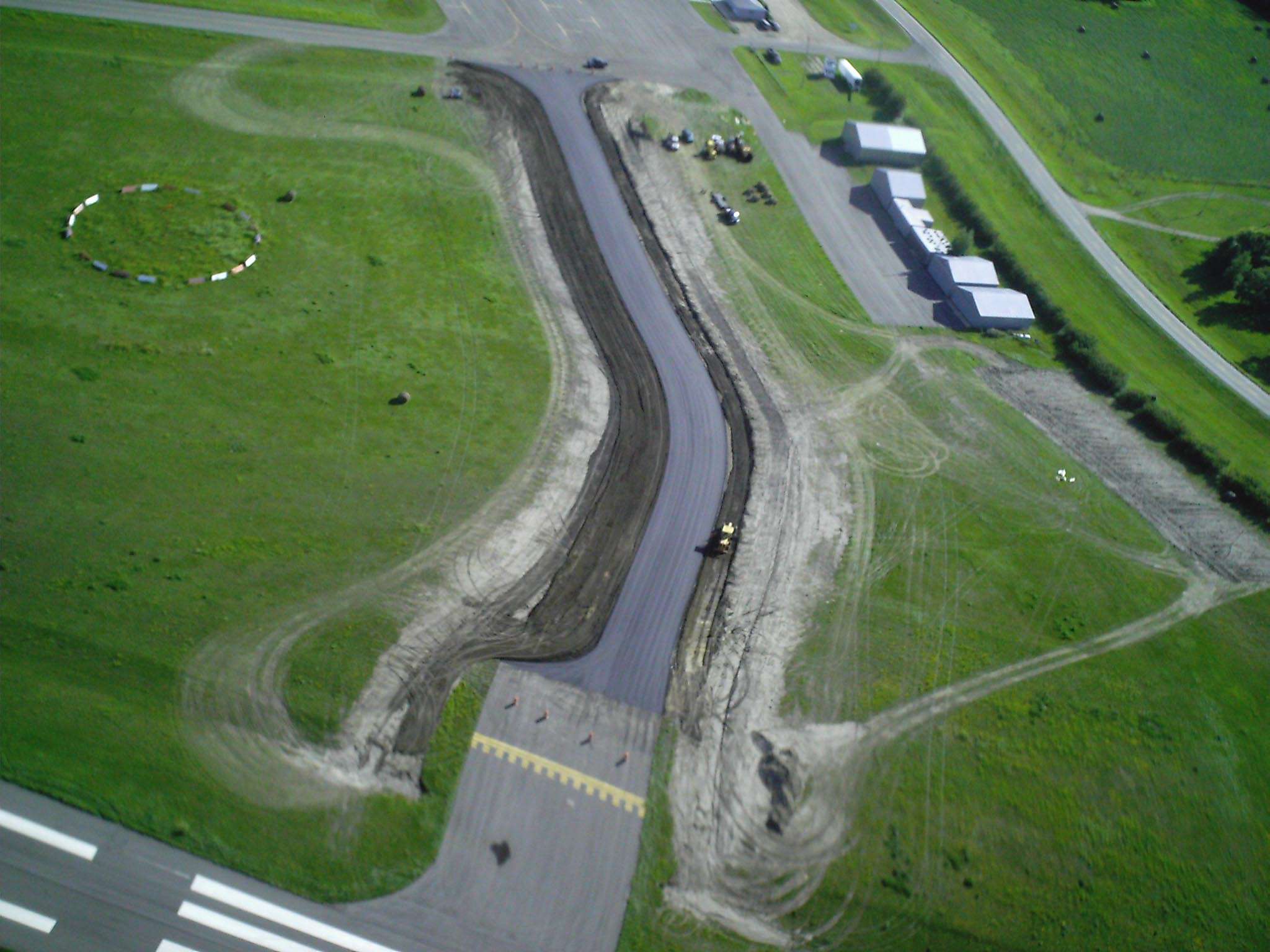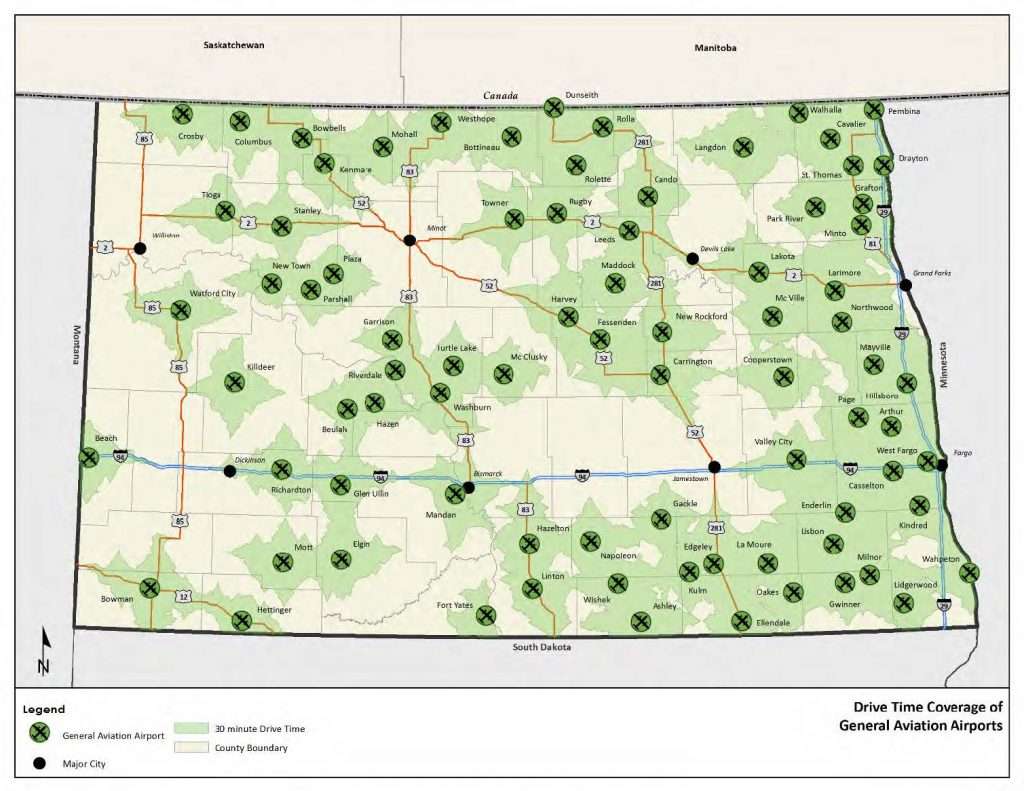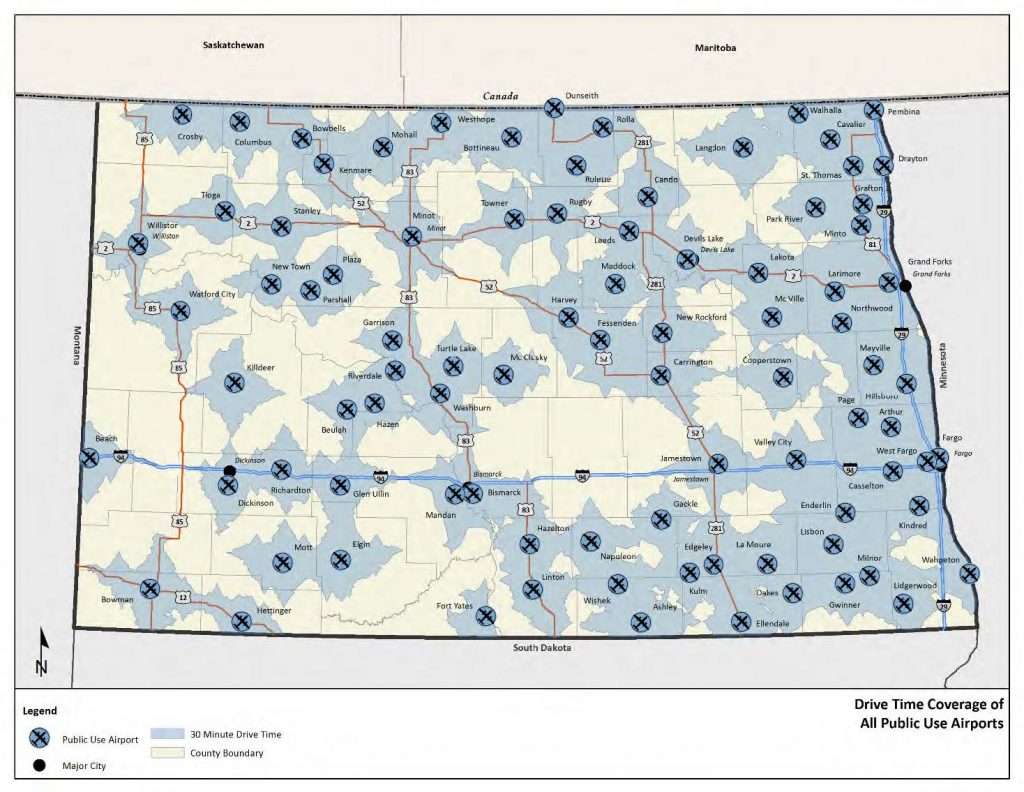
The future of rural airports
Insight into trends for rural airports and what small cities need to know to maintain viable air travel options
What comes to mind when you think of air travel? Hopping a Delta flight? Heading to Minneapolis for a vacation in the sun? The jet way at your local airport?
What about the 89 general aviation (GA) airports in North Dakota’s aviation system? These GA airports are a runway for a variety of operations that provide the state with a multitude of support. They offer employment opportunities (just under 10,000 jobs according to the North Dakota Economic Impact of Aviation 2010) and accommodate the air travel needs of residents, business people and visitors, thus standing as important centers of economic activity (North Dakota’s aviation system generated $1.1 billion of economic activity in 2010 according to the previously mentioned study).
And, lucky for us, our state is pretty well covered. In the image above, supplied by the North Dakota Aeronautics Commission (NDAC), you’ll see a large majority of the state – especially areas with the largest population – is within a 30-minute drive to a GA airport. And the image below shows the 30-minute drive time for all 89 public use airports within the North Dakota aviation system. Clearly, aviation is a critical method of transportation in North Dakota.
Healthcare (emergency medical operations) and agriculture are two of the most crucial aviation functions in our state.
Our aviation system is used for life-saving operations, providing statewide healthcare access and enhancing the quality of life for North Dakotans. The NDAC states that North Dakota’s benchmark goal is to provide 100 percent coverage for hospitals and clinics in the state, and we aren’t far off. Currently, our system covers 94 percent within either a 30-minute drive of GA airports, or a 60-minute drive of commercial service airports (see the figure below).
 For agriculture, North Dakota’s airports support aerial spraying for more than 30,000 farms, serving 225 aircraft operated by 110 agriculture companies in 2013. GA airports provide an efficient way for farmers to meet agricultural production needs beyond the ability of ground-only operations. Plus, considering nearly 25 percent of our state’s working population is employed in agriculture-related business, this is something we’re all looking to support.
For agriculture, North Dakota’s airports support aerial spraying for more than 30,000 farms, serving 225 aircraft operated by 110 agriculture companies in 2013. GA airports provide an efficient way for farmers to meet agricultural production needs beyond the ability of ground-only operations. Plus, considering nearly 25 percent of our state’s working population is employed in agriculture-related business, this is something we’re all looking to support.
Preserving our assets
As key players with growing operations in our communities, GA airports still have great need for infrastructure development. But the need is so large that airports need to maintain their existing infrastructure so they are useable into the future.
Maintaining North Dakota’s aviation system is in the best interest of everyone in the state. At Moore Engineering, we work with several airports, updating runway pavement, making runway lighting efficient and safe, developing hangar sites and helping area GA airports meet FAA standards. We work with a few North Dakota airports – some on a project-to-project basis and others in the role of the city engineer – so we’ve personally helped and seen the effect we can have on smaller North Dakota communities.
Perhaps the best example of this is a project we’re currently working with the Harvey Municipal airport. Harvey needed runway lighting improvements. Since the lights were in poor working condition, Air ambulance had been sent to a different airport several times to pick up a patient. This project reflects our mission at Moore Engineering mission: improving lives by building strong communities. And one thing is for sure – you can’t put a dollar amount on saving lives.
Funding
But, as with any operation, the money needs to come from somewhere – and there isn’t a lot of income at an airport outside of hangar and land rental and fuel revenue.
Airports that have local revenue sources (mill levy and non-mill levy) are typically better positioned to meet the local match requirements for federal grants that fund the development of new airport infrastructure. Other funding in North Dakota comes from North Dakota Aeronautics and the FAA (if they’re a National Plan of Integrated Airport Systems (NPIAS) Airport).
At that level, the FAA will contribute 90 percent funding to an eligible project. North Dakota Aeronautics will contribute five percent, and the airport has to come up with the remaining five percent. Eligible projects are generally whatever it takes to make that airport functional, safe and maintained at FAA standards.
If you want to know more about your local airport, or have questions, let’s talk.

